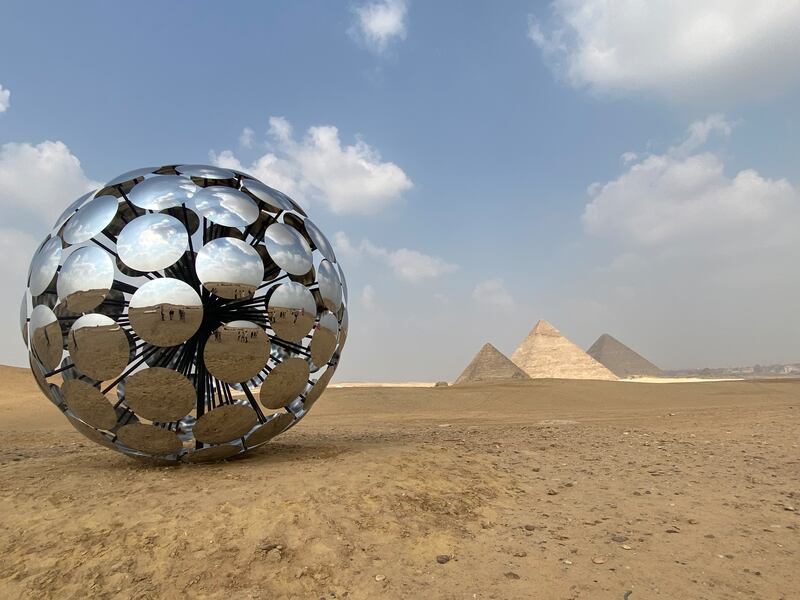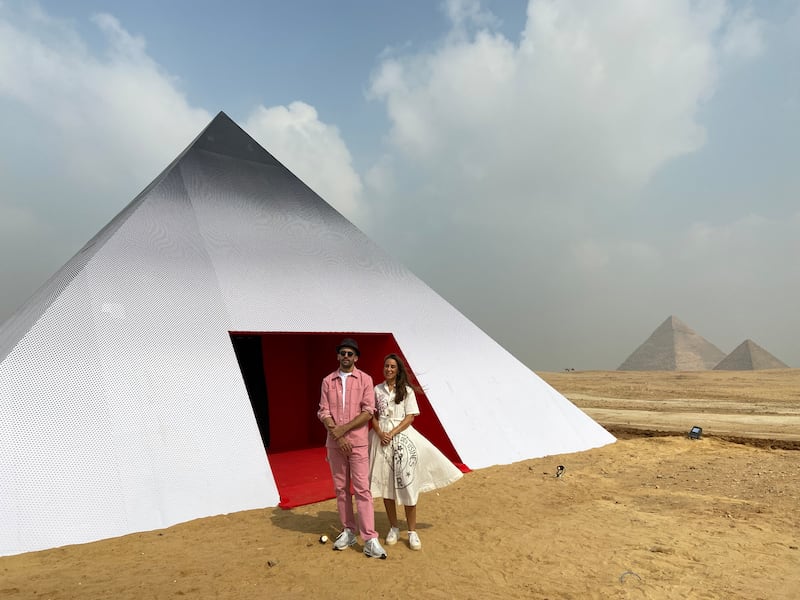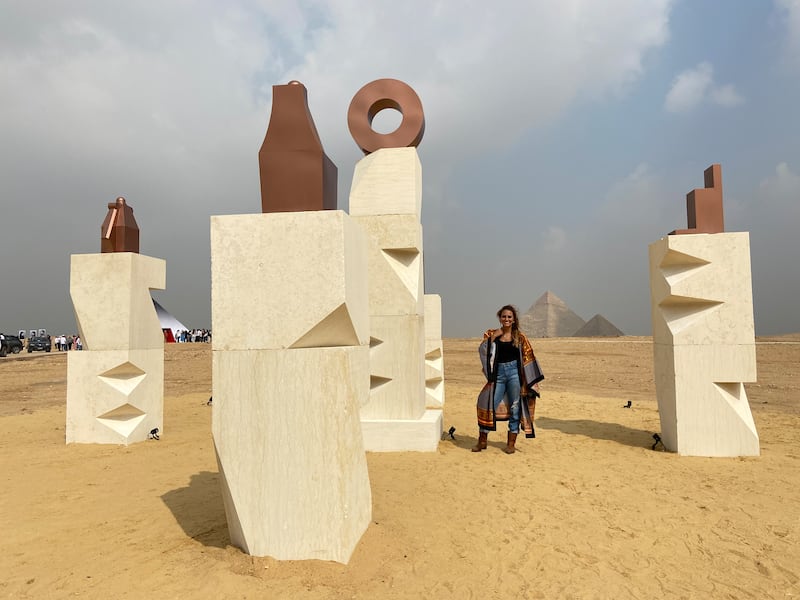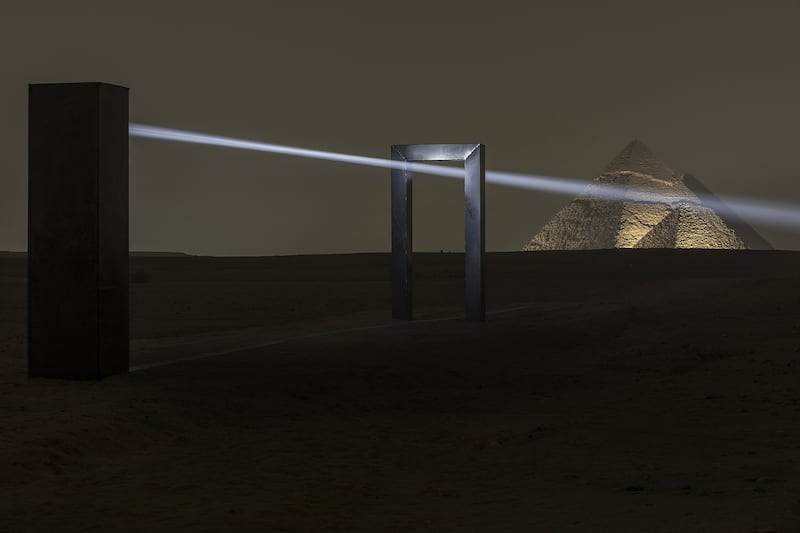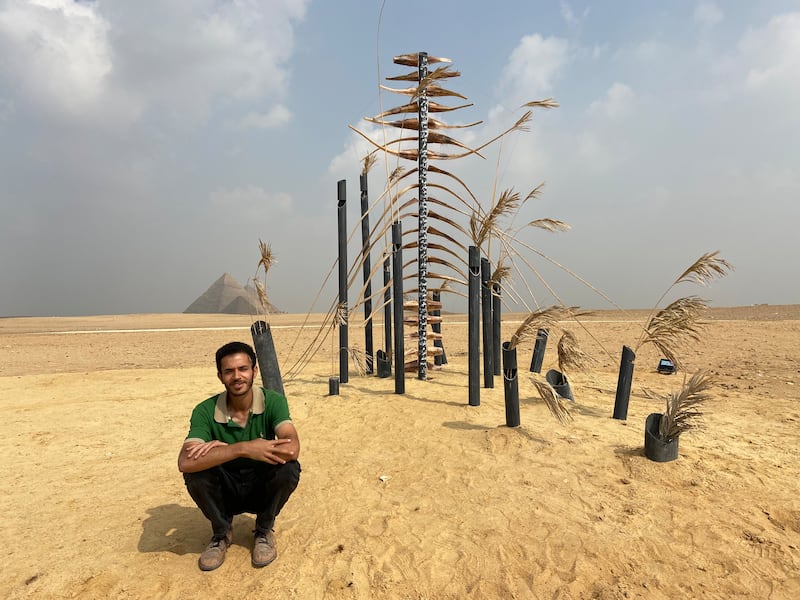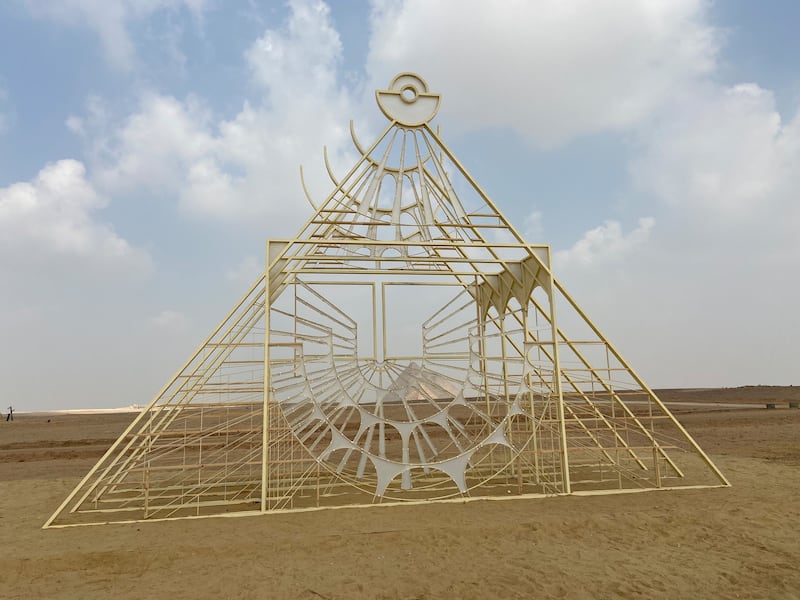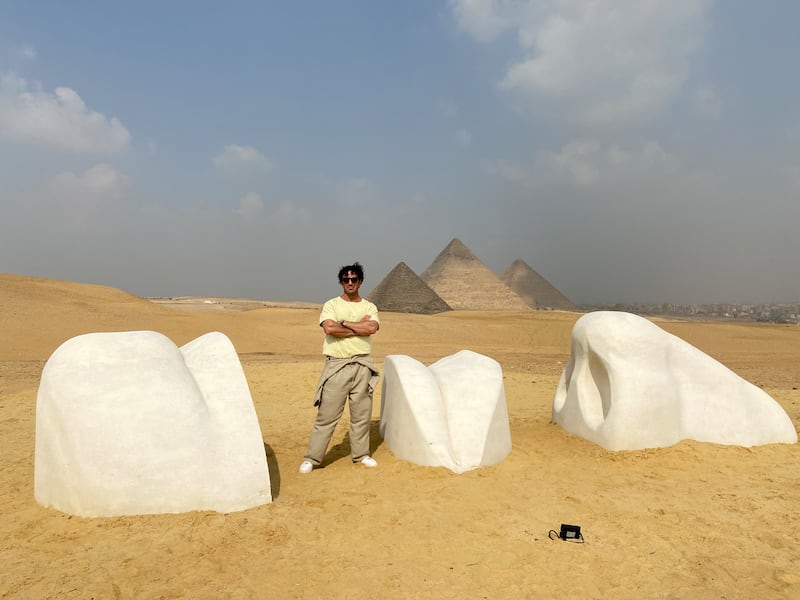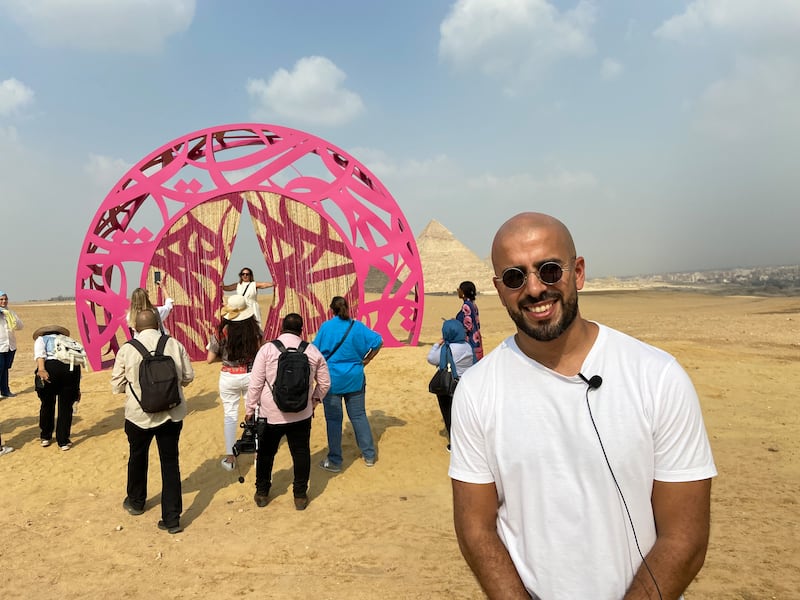An incomplete obelisk now looms in the desert beside the Great Pyramids of Giza as part of Forever is Now 2, the exhibition organised by Art d’Egypte that opened its second iteration on Thursday.
The backdrop is a magnificent one to contend with. Yet, Zeinab Alhashemi’s Camoulflage 1.618: the Unfinished Obelisk does not attempt to detract from the wonder of the pyramids. Instead, it was designed to blend within the landscape while echoing an interesting facet of Ancient Egypt.
The top portion of the obelisk reveals the structure’s skeletal steel form. The bottom half, meanwhile, is wrapped in recycled camel hide that alludes to the hue and pattern of the sands around it. The installation, Alhashemi says, draws inspiration from the obelisk in Aswan.
“Obelisks are built from one stone, a single piece of granite,” the Emirati artist says. “The ancient Egyptians wanted to create the largest obelisk is their history with the one in Aswan.”
However, as the creators were carving the monument out of the desert’s bedrock, it cracked, and the project was abandoned. It still lays in its quarry at Aswan, its bottom portion fused to the bedrock.
“It’s still unfinished,” Alhashemi says. “Part of my work is to understand how much we build, construct, deconstruct, or leave buildings as they are. I felt it was important to me to create an unfinished obelisk if I would like to create an obelisk. It rhymes well with my other work.”
With The Unfinished Obelisk, Alhashemi is the first Emirati artist to participate in Forever is Now.
Forever is Now: an exhibition from the Great Pyramid of Giza
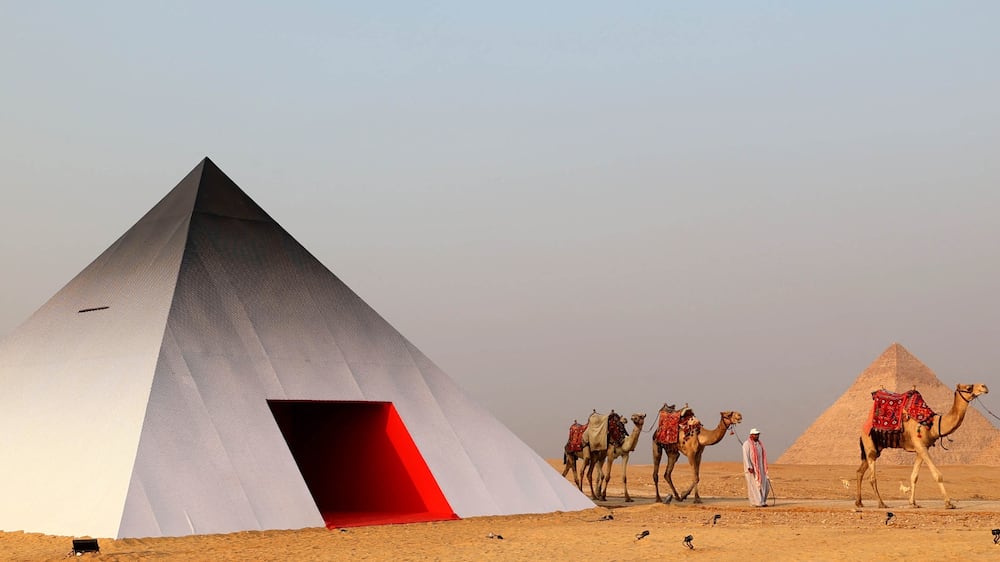
“It is a proud moment,” she says. “It’s a moment to celebrate Emirati artists and Arab women. I’m part of, what I would say, the third generation of Emirati artists. We're very much connected to the first and second generations of artists. We’re a community where we share support and I think this is going to open doors to more collaborations. It works within the ecosystem of the UAE and the creative industry as well.”
The installation is part of Alhashemi’s Camoulflage series, which she began in 2015. The first work in the series, which features an abstract rendition of a desert in camel hide, was presented in the exhibition Emirati Expressions at Abu Dhabi Art.
“It brought a lot of interest and attention,” she says. “The public wanted to get closer to the work, not knowing exactly what material it was made with. The minute they realised it was camel skin, they started asking so many different questions.”
Alhashemi says she is often asked why she chooses to incorporate camel hide within the work and often prefers to leave it open for interpretation. However, she did say she sought to capture the legacy of the desert-dwelling animals in the region.
“Seeing the shades of sand and comparing them to the nature of camels and their breeds,” she says. “If you zoom into the leather itself, you’ll find it’s almost like a sand dune, in terms of its curves and shades. My interest in nature is always bringing in the geometry in nature from a micro level and a macro level.”

While she has worked with varied materials, Alhashemi revisited the camel hide as a medium for her Abu Dhabi Music and Arts Foundation commission last year. She then again returned to the material when invited to participate in Desert x AlUla 2022, creating boulder-like sculptures faceted with camel hide.
“The minute I visited the site, I knew I wanted to work with camel leather again,” she says. “That was something that made so much sense because again, I'm visiting the desert, I will have my work in the desert, so how about actually bringing in the camel, which is a natural inhabitant of the desert, and creating a public artwork with it?
“Being in the desert in AlUla for the first time, I got so overwhelmed with the rock formations. I saw the camels transform into rock formations. This is where the idea of abstract rocks covered with camel skin came from.”
The pyramids, she says, struck her in much the same way.
“This time, it’s such an ancient monument that I wondered how my artwork would be next to it,” she says. “Then came the idea of obelisks, which were built and sometimes gifted to different civilizations and at a later stage stolen, and I came across the unfinished obelisk.”
Alhashemi has always been more interested in displaying her work in the public sphere, as opposed to galleries or exhibition spaces. With her work, she says she seeks to create monumental pieces that become part of the land.
“The flourishing years of art in the UAE allowed artists to experiment outside the box of an exhibition space,” she says. “There were a lot of art interventions, there was a lot of like temporary public art. And I got the chance to understand my art, or what I wanted to create in a public space.”
Camoulflage 1.618: the Unfinished Obelisk is among the 11 artworks being on display at Forever is Now 2. The first edition of the event, held last year, drew in some 500,000 visitors. This year’s iteration is organised with the support of Abu Dhabi Festival.
Besides Alhashemi’s installation, the exhibition includes works by Saudi artist Mohammad Alfaraj and Egyptian sculptors Therese Antoine and Ahmed Karaly. Also joining the exhibition are British-American sculptor Natalie Clark, Italian light and sound artist Emilio Ferro, Cameroonian artist Pascale Marthine Tayou, Syrian-born Swedish visual artist Jwan Yosef, Spanish artist SpY, French-Tunisian artist eL Seed and returning French street artist JR.
“Following the remarkable success of the first edition of Forever is Now we are proud to play a role once more in the realisation of the historic second edition which features Alhashemi and her unique geometric installation inspired by Emirati heritage, Camoulflage 1.618: The Unfinished Obelisk, at the historical site of the only surviving wonder of the ancient world,” Huda AlKhamis-Kanoo, founder of Abu Dhabi Music and Arts Foundation and the artistic director of Abu Dhabi Festival, says.
“We are pleased to partner with Art d’Egypte to cultivate our shared vision to nurture artistic innovation and encourage free creative thinking through the exceptional power of the arts”.
Forever is Now 2 is running until November 30 at the Great Pyramids of Giza, Egypt

